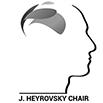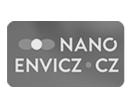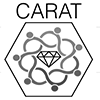Heterostructures of 2D and 3D materials for solar energy conversion
Heterostructures combining optically transparent 2D materials with 3D materials offer a large unexplored territory for the development of unique junctions, whose electronic structure, work function and optical properties can be specifically designed and adjusted. This could lead to a major breakthrough in efficiency of thin film silicon solar cells, which offer much shorter energy payback time but lower efficiency than wafer based solar cells, dominating current photovoltaic market. For such an endeavor we propose to fuse state-of-the-art characterization techniques probing energy transfer processes at the nano- and microscale, in-situ doping experiments and new material combinations to deepen and broaden the knowledge of replacing the dead layers in Si by 2D materials, currently limited to p-doped graphene and n-doped molybdenum disulphide. Beyond that, by employing novel fabrication concepts, we intend to lay foundations for the optimization of new generation solar cells in terms of stability, current-voltage and optical characteristics.
Mgr. Frank Otakar Ph.D.
 jh-inst.cas.cz
jh-inst.cas.cz


















